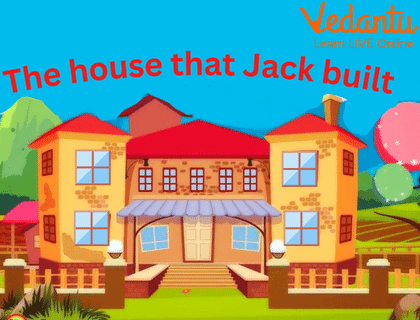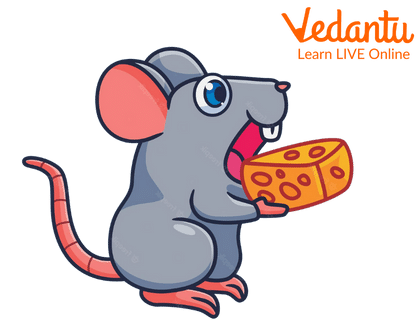An Overview of the Poem
The cumulative story approach is used in "This is the House that Jack Built" to reveal how events are attached to the conclusion gradually. This is not the story of building a house, but as the plot develops, the house is surprisingly tied to all other things, people and things. Children will find it incredibly attractive and fun. This was first published in 1755 in London's "Nurse Truelove's New-Year-Gift'' or "Book of Books for Children'' and was later included in a few more collections of nursery rhymes. However, it is believed that the story is quite old.

The House that Jack Built
Theme
The main theme of the poem revolves around the theme that it was Jack who had built the house that every character was residing in. Throughout the poem, the poet never fails to re-establish the fact that it was Jack who had built the house. This can be considered as a sign of toxic masculinity and establishing one’s power and control over everything happening in the house.
This is the House that Jack built Nursery Rhyme Lyrics
Song Lyrics: This is the House that Jack built!
"This is the 'HOUSE' that Jack built.
This is the 'MALT/CHEESE' that lay in the house that Jack built.
This is the 'RAT' that ate the *malt/cheese*.
That lay in the house that Jack built!
This is the 'CAT' that chased/killed the rat
That ate the malt/cheese *that lay in the house that Jack built*.

The Rat that Ate the Cheese.
This is the 'DOG' that worried the cat.
That chased/killed the rat that ate the malt/cheese.
That lay in the house that Jack built.
This is the 'COW' with the crumpled horn.
That tossed/shook the dog that worried the cat.
That chased/killed the rat that ate the malt/cheese.
That lay in the house that Jack built.
This is the 'MAIDEN' all forlorn.
That milked the cow with the crumpled horn.
That tossed/shook the dog that worried the cat.
That chased/killed the rat that ate the malt/cheese.
That lay in the house that Jack built.
This is the 'MAN' all tattered and torn.
That kissed the maiden all forlorn.
That milked the cow with the crumpled horn.
That tossed/shook the dog that worried the cat.
That chased/killed the rat that ate the malt/cheese.
That lay in the house that Jack built.
This is the 'JUDGE/PRIEST' all shaven and shorn.
That married the man all tattered and torn.
That kissed the maiden all forlorn.
That milked the cow with the crumpled horn.
That tossed/shook the dog that worried the cat.
That chased/killed the rat that ate the malt/cheese.
That lay in the house that Jack built.
This is the rooster/cock that crowed/crew in the morn
That woke the judge/priest all shaven and shorn.
That married the man all tattered and torn.
That kissed the maiden all forlorn.
That milked the cow with the crumpled horn.
That tossed/shook the dog that worried the cat.
That chased/killed the rat that ate the malt/cheese.
That lay in the house that Jack built.
This is the 'FARMER' sowing his corn.
That kept the rooster/cock that crowed/crew in the morn
That woke the judge/priest all shaven and shorn.
That married the man all tattered and torn.
That kissed the maiden all forlorn.
That milked the cow with the crumpled horn.
That tossed/shook the dog that worried the cat.
That chased/killed the rat that ate the malt/cheese.
That lay in the house that Jack built.
This is the horse and the hound and the horn.
That belonged to the farmer sowing his corn.
That kept the rooster/cock that crowed/crew in the morn
That woke the judge/priest all shaven and shorn.
That married the man all tattered and torn.
That kissed the maiden all forlorn.
That milked the cow with the crumpled horn.
That tossed/shook the dog that worried the cat.
That chased/killed the rat that ate the malt/cheese.
That lay in the house that Jack built."
Summary
The poem that we just discussed talks about how all the different characters residing in the house that Jack built are connected, from the mouse who ate the cheese to the cat who chased this mouse and the dog who troubled this cat who had eaten the mouse. In this way, the poet displays all the characters in relation to one another having one thing in common: they all lived in the house that Jack built, as the poem suggests.
Solved Questions
1. When and where was the first print of this rhyme?
Ans: According to The Oxford Dictionary of Nursery Rhymes, The House That Jack Built was first seen in print in 1755 in Nurse Truelove's New-Year-Gift.
Conclusion
We know that "This is the House that Jack built" is a classic nursery rhyme with numerous verses, each adding a new line to the previous one. It is an example of a Cumulative Story, as we see, as the poem continues, new verses are added, with each verse a new line is added.
For example, in verse 1, there was only one line followed by two in the next verse, and in the same manner, an additional line was added with each verse. That's why this poem is easy to sing and memorise because of the repeated verses, thus much loved among the children. Due to this, the kids enjoy this rhyme very much.


FAQs on This is the House that Jack Built
1. How often does the expression "the house that Jack built" appear? Does that increase the poem's interest level?
There have been six uses. Yes, the fact that it sounds like a chant makes the poetry more engaging.
2. Who killed the malt-eating rat?
Cat killed the malt-eating rat.
3. What do you understand by a cumulative story and give an example.
A cumulative story is a poem with one additional line added in each verse, for example, verse 1 has one line, verse 2 has two lines, the third verse has three lines and so on.
A sample poem following this rule is stated below:
"This is the cupcake(a small size cake)
that my mother baked.
This is the strawberry that was put on the cake that my mother baked.
This is the boy who ate the strawberry that was put on the cake that my mother baked.
This is the girl who cried for the boy who didn't give her the strawberry that was put on the cake that my mother baked."





